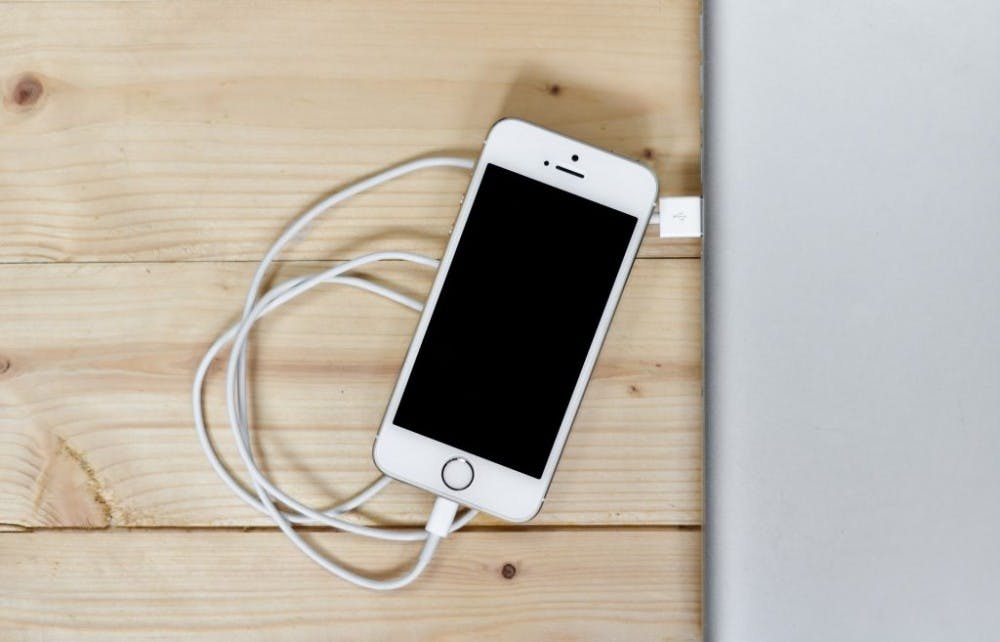A world where your phone can be charged in seconds may not be out of reach.
Recently, a University of Central Florida team of researchers developed an upgraded supercapacitor that is superior to the conventional lithium ion battery in terms of energy density, power density and cyclic stability. The improved supercapacitor is a promising alternative to other energy storage devices for various applications from small electronic devices such as mobile phones, to larger applications such as electric vehicles.
Supercapacitors are energy storage devices consisting of two conducting plates (electrodes), an electrolyte and a separator. Using electrostatics, energy can be charged and discharged quickly. The speed of high burst energy discharge is instantaneous, opening possibilities of vehicular application. Compared to lithium ion batteries, which are commonly found in power mobile devices, laptops and tablets, supercapacitors can charge devices faster with a longer cycle lifetime or number of charges without significant change in performance.
However, a major downside to supercapacitors is their low energy density. In other words, supercapacitors cannot store high amounts of energy, thus they are not able to keep a device charged for long.
Supercapacitor technology has been around for decades, and optimizing its performance is possible in many ways. Highly conductive electrode materials that have porous structures allow better ion transport, which is a key aspect in supercapacitor research. In addition to better materials, efficient electrode designs also play a major role in the performance of the supercapacitor.
Researchers implemented a novel design and new materials to improve the performance of the supercapacitor. The type of supercapacitors the researchers studied use a material called two-dimensional transition metal dichalcogenides (2D TMDs).
“There have been problems in the way people incorporate these two-dimensional materials into the existing systems — that’s been a bottleneck in the field. We developed a simple chemical synthesis approach so we can very nicely integrate the existing materials with the two-dimensional materials,” Yeonwoong Jung, an assistant professor at the University of Central Florida and lead investigator, said in a press release.
The researchers added an array of electrochemically active 1D nanowires which increased the total surface area, capacitance and mechanical robustness of the supercapacitor. These nanowires were coated with the 2D materials which promote faster charging and discharging. The researchers hypothesized the integration of both 1D and 2D materials will offer synergistic advantages.
The specific material combination called h-WO3 /WS2 core/shell nanowire with a 0.1 M sodium sulfate electrolyte was tested with several electrochemical techniques.
The researchers conclude their electrode design and hybrid materials provide various improvements to supercapacitor performance. In their paper published in ASC Nano, the researchers reported excellent capacitive properties and a 30,000 cycle stability, which means that the battery can be charged, drained and recharged 30,000 times before it starts to degrade.
In comparison, a typical lithium ion battery will face degraded performance after 1,500 cycles. The improved supercapacitor also achieved a competitive maximum energy density of 600 Wh/L, which according to the researchers, outperforms almost all of the other leading batteries and capacitors in the field.
Advancements in supercapacitor capabilities may potentially lead to its usage in small electronic devices such as mobile phones. If supercapacitors can be commercialized with energy and power densities and cyclic stability superior to conventional lithium ion batteries, they could replace lithium ion batteries as the new energy storage device.
Obstacles include cost, adaptation and need for further advancement. The flexible nature of the materials could also add compatibility in wearable technology.
“It’s not ready for commercialization,” Jung said in a press release. “But this is a proof-of-concept demonstration, and our studies show there are very high impacts for many technologies.”





